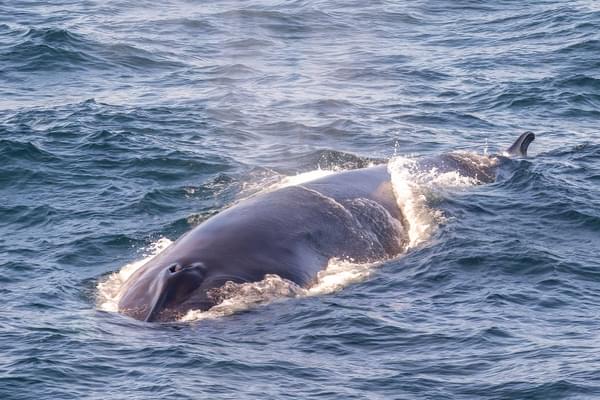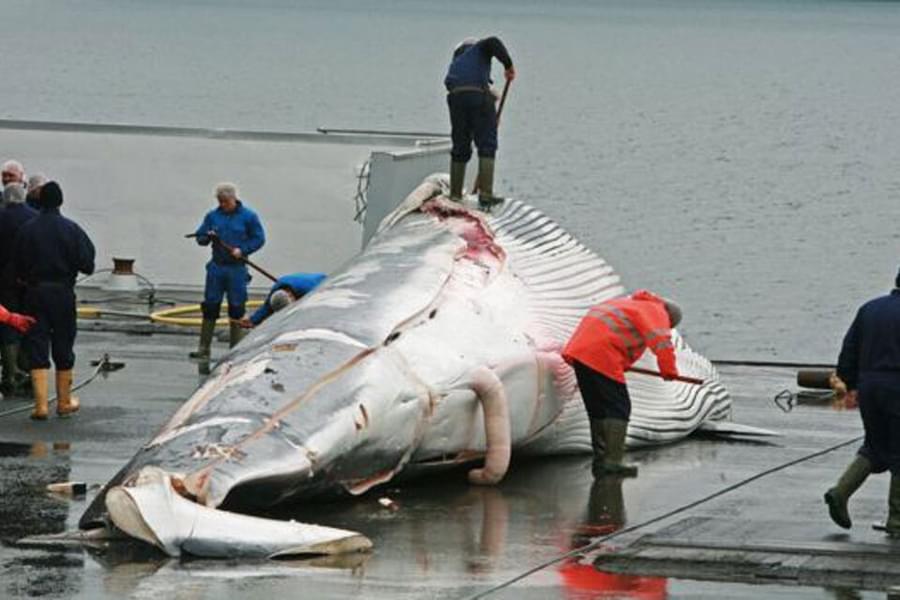As investments go, how would you feel about a decision like this?
A $47 million dollar spend, which will take years to repay, but which as a taxpayer you’ve contributed to, in order to catch and kill something that a diminishing number of people eat, and which may be harmful to your health.
If someone pitched this to one of the Dragons Den investors, we can guess what their response might be.
So a story in The Guardian this week is an insightful glimpse into the world of the Japanese whaling industry, as it gets set to unveil its shiny new £47 million whaling “Mother Ship” the Kangei Maru. This is less a ship than a mobile industrial plant – weighing in at 9,300 tons, and with a 100 strong crew, the ship is capable of hauling 70-ton fin whales onboard and storing 700 tons of meat. It’s a whaling ship, factory, small town, abattoir, meat processor and refrigeration unit all in one.
But if this wasn’t all sufficiently alarming, the ship has one design element that is causing even more concern – it has a range of 13,000km, leading conservationists to speculate if Japan may once again be eyeing waters further afield as a target area for its whaling operations.
The ship’s owners, Kyodo Senpaku, deny this, saying that; “Our mission is to use the new ship to conduct commercial coastal whaling for at least the next 30 years.”
If we wind the clock back to 2014 the International Court of Justice ordered a halt to Japan’s whaling expeditions after concluding the hunts were not, as Japan had claimed, conducted for scientific research. Four years later, Japan, announced it would stop hunting whales in the Southern Ocean, but resume commercial whaling in its own coastal waters.
So aside from the question around what the Kangei Maru will be used for, the other big question is “Why?”. Much like in Iceland and Norway, the two other nations that engage in commercial whaling, appetites for whale meat are in decline.
According to Japanese government figures, annual whale meat consumption is between 1,000-2,000 tons annually, which is just 1% of the 230,000 tons consumed in 1962. This is partly due to the price – since Japan pulled out of the Southern Ocean, whale catches have been smaller and composed of a reduced variety of species, meaning prices have increased to cover costs. And prices will have to remain high in order to repay the loans needed to build the ship.
However (and you can imagine the Dragons in their Den lining up to pose this question…) this is all contingent on a generation of consumers suddenly deciding that whale meat is more appealing than a McDonalds or a Dominos pizza. This isn’t happening in Iceland or Norway, so why should Japan be any different? And why should taxpayers in Shimonoseki City feel that the $300 million of their hard-earned money paid as a contribution to the ship’s costs be considered good value, as opposed to propping up a failing industry with no immediate prospect of a return on that investment?
Japan’s whale industry promotion office claims that locally caught refrigerated whale meat is more appealing than frozen whale meat from further afield and they have been able to be more “ambitious” about marketing it. But they also acknowledge the Catch-22 situation in that whale meat prices will have to remain high in order to pay off the astronomical costs of the ship.
Time will tell if the Kangei Maru is a costly white elephant, but we can be sure this won’t be the last time we write about it.

The best way to really appreciate how amazing whales and dolphins are is to see them in the wild where they belong - and you can do that from right on your doorstep by joining one of our Sea Safaris! Visit www.orca.org.uk/watch to check out all the upcoming dates and take your first step on your very own whale and dolphin adventure!

